Red Panda: Clever, Cute, and Wildly Unique
Meet the Red Panda
With their fluffy faces, striped tails, and tree-top antics, red pandas are one of the most beloved animals in the world. But did you know they’re also amazingly adapted, clever in their own way, and belong to a family all their own?



In this post, we’re climbing into the trees to meet these quirky, curious creatures and explore everything from their bamboo-filled diets to their winter survival tricks. Whether you’re already a red panda fan or just discovering them for the first time, get ready to fall in love!
Species of Red Pandas
Red pandas belong to a unique scientific family called Ailuridae. They’re the only living member of this family, making them as rare as they are adorable. Although only one species exists — Ailurus fulgens — there are two recognized subspecies based on where they live and subtle physical differences:
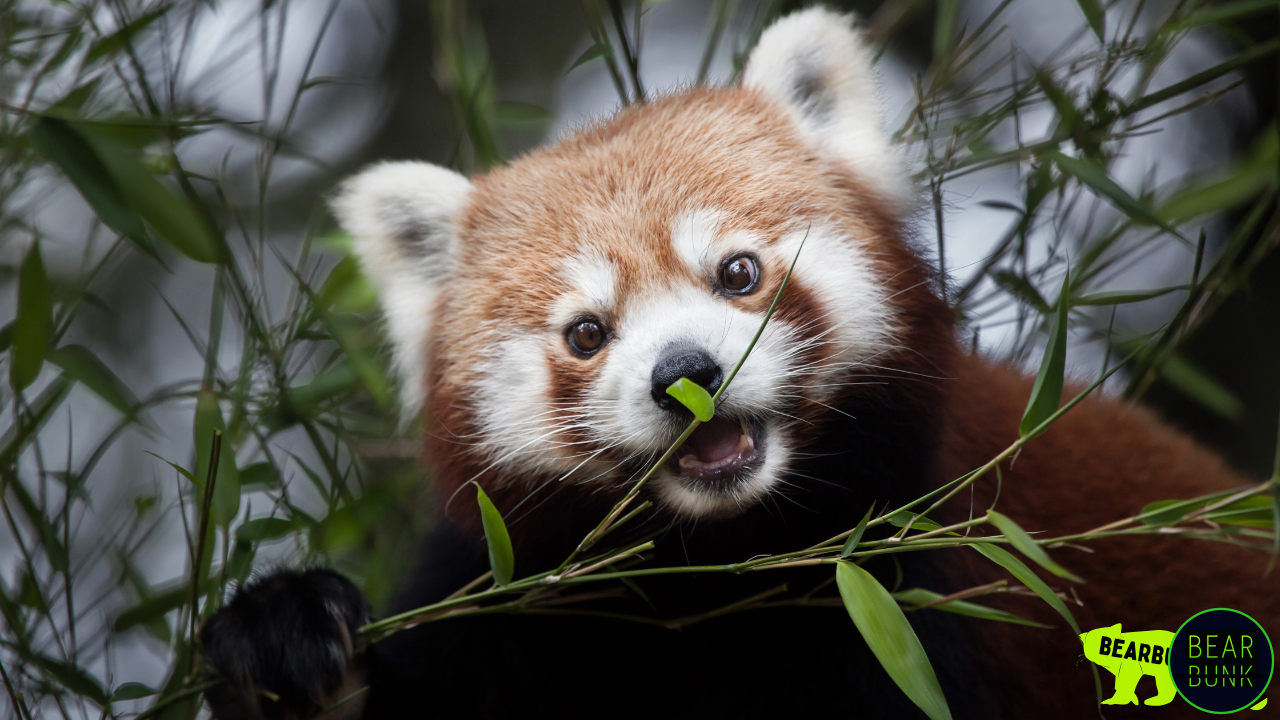
Western Red Panda (Ailurus fulgens fulgens)
Native to the Himalayas, especially Nepal, India, and Bhutan. Smaller in size with lighter-colored facial markings.
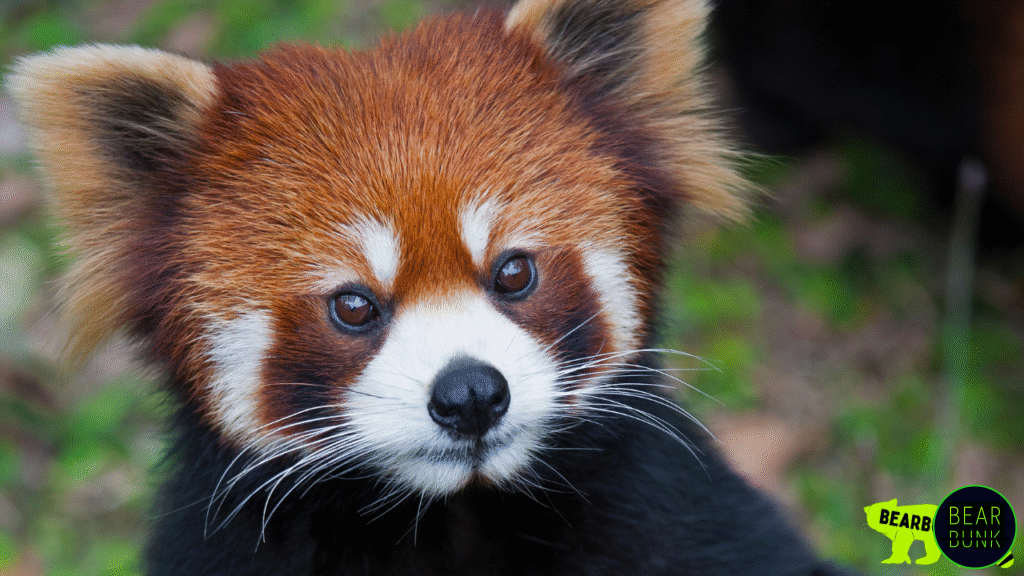
Styan’s Red Panda (Ailurus fulgens styani)
Found in parts of China and Myanmar. Slightly larger with a more robust skull and darker facial markings.
Fossil records show that red panda relatives once roamed as far as North America, but today, they’re only found in Asia’s mountainous forest regions.
Habitat
Red pandas live in cool, temperate mountain forests packed with moss, bamboo, and tree cover. These forests are usually located at elevations between 6,000 and 13,000 feet, where the air is thin and the vegetation dense.
They spend most of their time in the trees — sleeping on branches, navigating leafy canopies, or curling up in shaded tree hollows. Their reddish-brown fur blends beautifully with the moss and tree bark, providing natural camouflage from predators.
Diet
All monitor lizards are carnivores. While their diet varies by size and location, they commonly eEven though red pandas belong to the order Carnivora, their diet is overwhelmingly herbivorous — up to 95% bamboo! They snack on bamboo leaves and shoots throughout the day and may supplement their diet with fruit, berries, acorns, roots, insects, and even bird eggs when available.
Their pseudo-thumb (an extended wrist bone) helps them grip bamboo stalks like little hands, while strong jaws and molars allow them to chew tough, fibrous plants with ease.
Fun fact: An adult red panda can eat up to 20,000 bamboo leaves in a single day!
Share On Social:
Mating & Raising Young
Red pandas are mostly solitary, but during mating season (January–March), they seek out partners. After a gestation period of around four months, females give birth to 1–4 cubs, usually in a well-hidden leafy den.
Cubs are blind at birth and rely entirely on their mother, who keeps them safe, warm, and hidden. She may even move them to different nests if she senses danger. Cubs stay with their mother for about 8–9 months, giving them time to grow, explore, and learn key survival skills before setting out on their own.
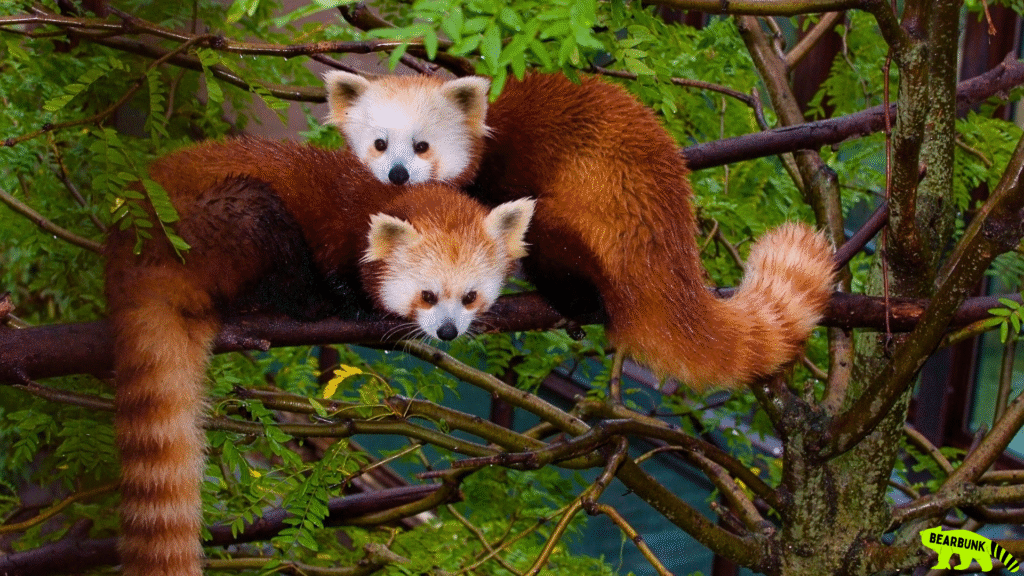
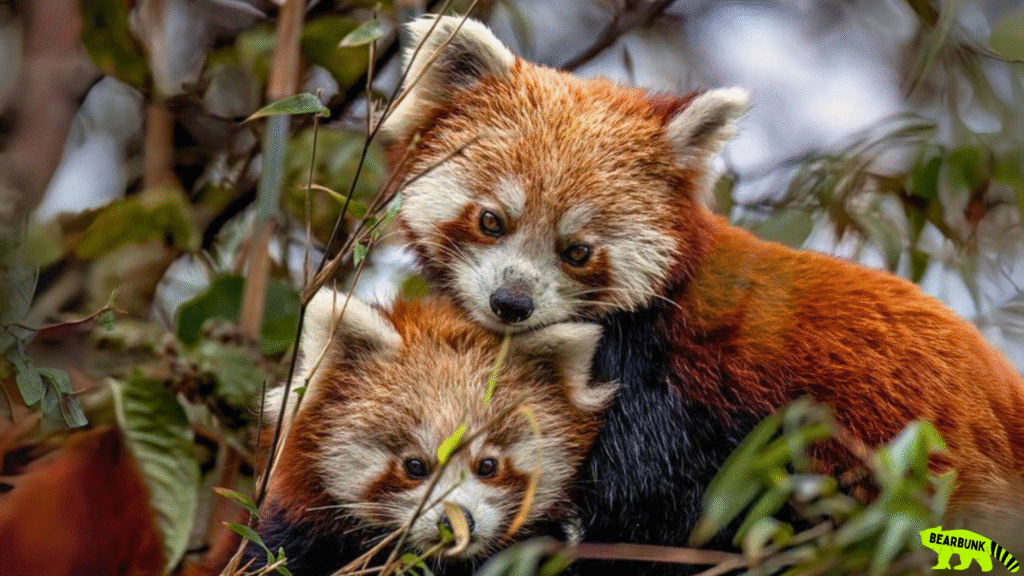
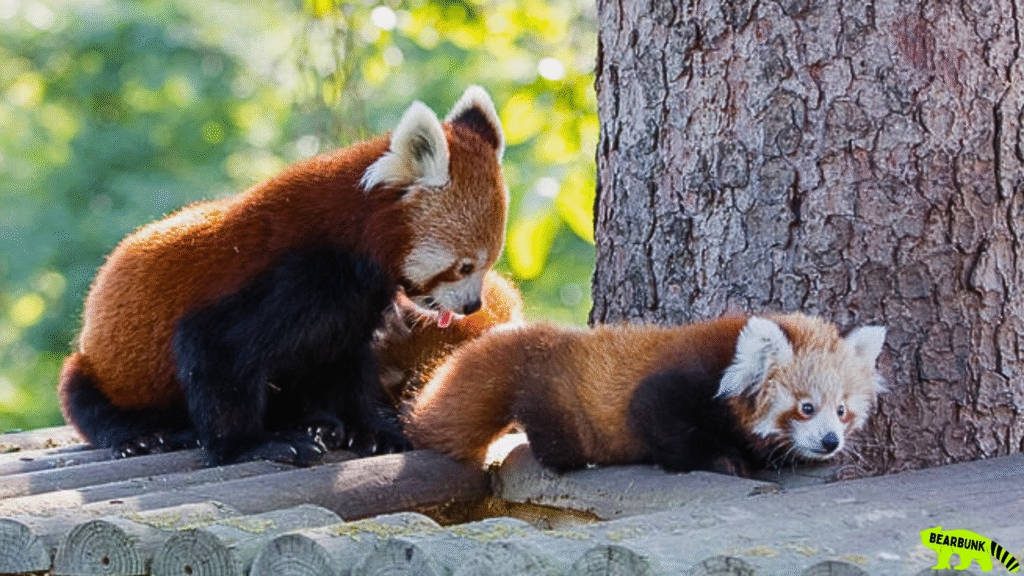

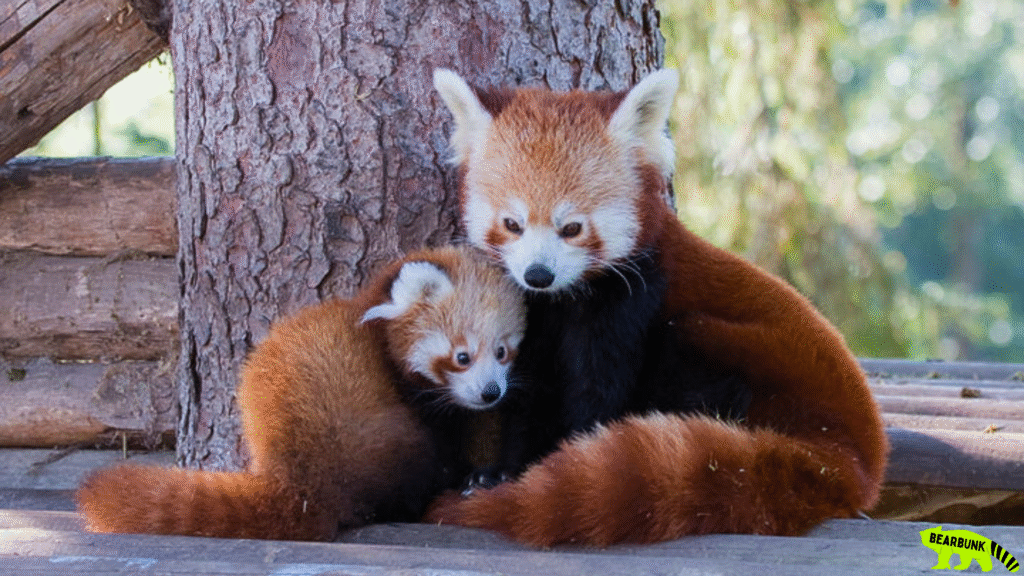
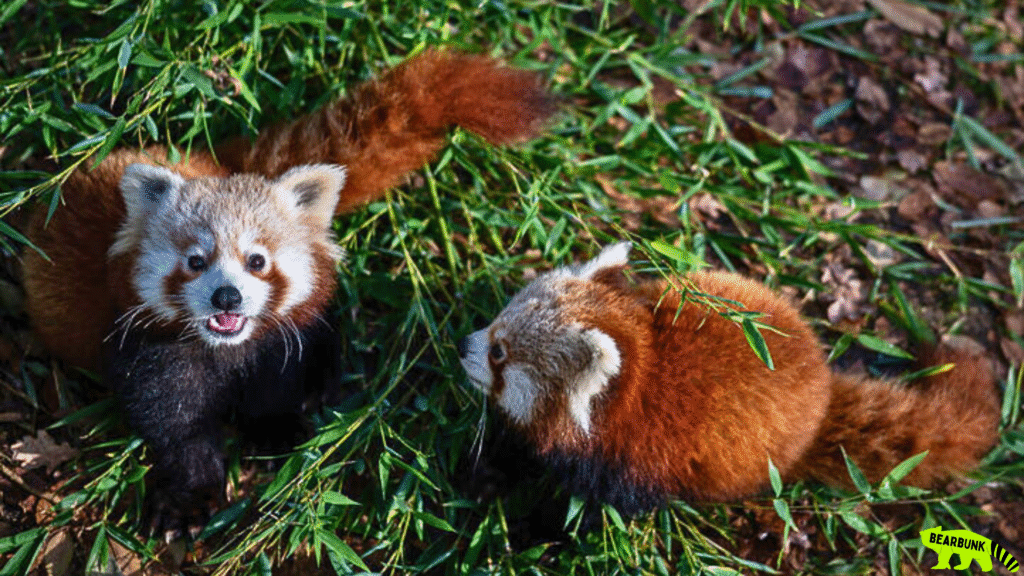
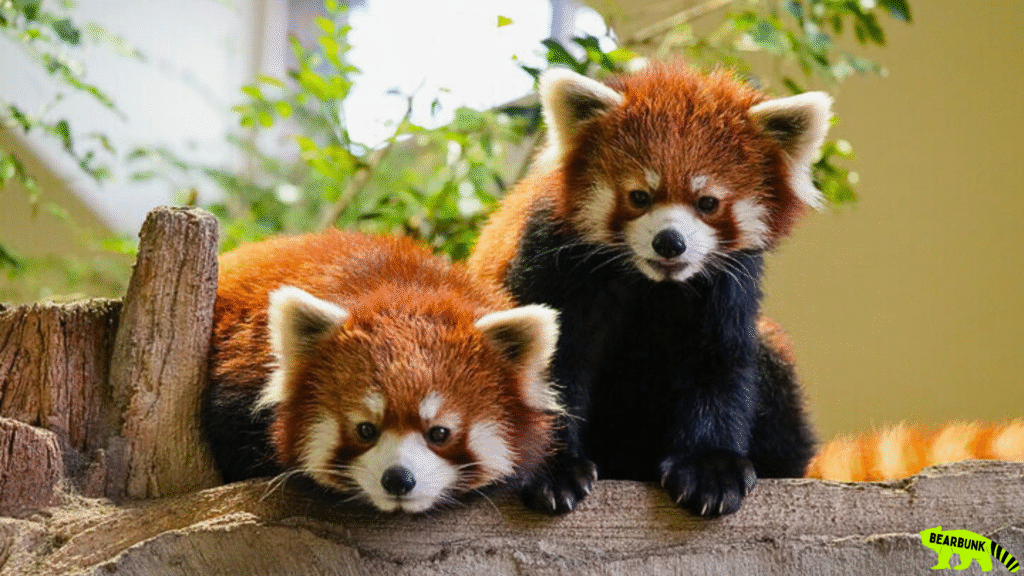
🌟 Fun Facts
- Red pandas have false thumbs, just like giant pandas — an adaptation for gripping bamboo.
- Their ankles can rotate 180 degrees, allowing them to climb down trees headfirst.
- They use their bushy tails for balance and warmth, wrapping them like a blanket in cold weather.
- Red pandas are crepuscular, meaning they’re most active at dawn and dusk.
- They use scent glands on their feet and tails to mark territory and communicate with other pandas.
- To drink water, red pandas dip a paw into the water and lick it off — an unusual and charming behavior.
- They make high-pitched twittering sounds to communicate — it’s as cute as it sounds!
🔎 About Red Pandas
Scientific Family: Ailuridae
Number of Species: 1 (with 2 subspecies)
Habitat: Temperate mountain forests (Asia)
Diet: Mostly bamboo, with occasional fruit, berries, and insects
Lifespan: 8–10 years in the wild, up to 15+ years in care
Unique Traits: False thumb, excellent climbers, bushy striped tail
Social Structure: Solitary, except for mothers and cubs
Fun Fact: Red pandas were discovered before the giant panda — and were originally the only animals called “panda”!
❤️ Why We Love Them
Red pandas aren’t just cute — they’re clever, quiet survivors. With adaptations like built-in tree gloves (those curved claws and thumbs!) and fluffy winter-proof tails, they’re masters of high-altitude living.
Watching them navigate branches, nibble on bamboo, or curl up in a cozy ball is pure wildlife joy. They remind us how even the smallest creatures play big roles in their ecosystems — and how important it is to protect them.







🌍 Conclusion
From their mysterious history to their modern-day forest homes, red pandas continue to capture hearts around the world. While their populations face threats from habitat loss and climate change, conservation programs and protected habitats are working hard to ensure their future.
Let’s keep learning, sharing, and speaking up for the species we love — starting with this agile, adorable, and endlessly fascinating animal. 🐾
🦎💚 Stay curious — and keep exploring more amazing animals right here at BearBunk
Did you learn something new? Share this post to your favorite board or group and help others fall in love with the wild world of reptiles.
Watch the Video on YouTube:
Red Pandas Adorable, Agile, and So Smart
Learn more about:
Mammals, Asian Wildlife, and Smart Animals






Leave a Reply